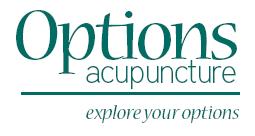
“My, what big ears you have!”
“ All the better to hear you with!”
Or, if you’re a Chinese Medicine practitioner: “All the better to live a long, healthy life with!” That’s because the ears are a manifestation of the kidneys which hold our essence (jing), our genetic potential, and large ears can be an indication of health and longevity.
Acupuncturists and Chinese herbalists have long understood this connection between the ears and the kidneys, relating issues such as hearing loss, tinnitus, and ear infections to imbalances of the kidney qi. In clinical practice we will treat the kidneys while working with these types of disorders. Interestingly, Western medicine also recognizes a relationship between the kidneys and the ears. The inner ear and the kidneys develop at the same time in utero, so if a baby is born with hearing issues, a good doc will know to immediately check the kidney function. [1] Ongoing research is still exploring the parallels of specific aspects of the inner ear to renal function. [2]
The ears are also a valuable microsystem in Chinese Medicine practice. Being a manifestation of the kidneys which govern our development, the ears are actually a map of our development. They reflect the whole body and have their own complete acupuncture point system as such. Picture an upside down fetus when looking at the ears in this way, with the head at the lobe and spine curving up to the little baby bum at the top, with internal organs on the inner portions of the external ear. Paul Nogier, a French Neurologist, is actually considered the father of auricular medicine, as he measured the electrical conductivity along the skin of the ear and recorded the specific points as a reflexology system, which was then incorporated into Chinese Medicine texts. He based his understanding of this system on the correlating tissue types and innervation between various parts of the ear and the parts of the body they represent.
“The ear is one of the few anatomic structures which are built up of tissue from each of these three primary tissue types to be found in an embryo. Paul Nogier maintained that each tissue type in the ear had a link to the various somatotopical reflections and to the innervation related to that part of the ear.” [3]
Many Chinese Medicine practitioners diagnose and treat the whole body just using the ears. Abnormalities, tenderness, discolorations, etc. on the ear can signal issues in the correlating part of the body. There have been studies done to test these practitioner’s accuracy. In one study, pre-established medical diagnoses matched with auricular diagnoses over 75% of the time. [4] Treatment can then be done with needles or ear seeds. The benefit of ear seeds is that they can stay on the ear for up to a week, providing continuous stimulation of the ear acu-point. Practitioners can also train patients in administering their own ear seeds for home use. Ear treatments have been used successfully in the treatment of addictions, chronic pain, anxiety and weight loss among many other conditions.
A simple way to experience the amazing healing potential of your own ears is to massage them! In addition to all the acupressure points you will be activating, the ears are actually the only external access (via the auricular branch) we have to the Vagus nerve (the longest nerve) in the body.[5] Stimulation of the vagus nerve has tremendous benefits, including relaxation, improved digestion, cognitive function and calming inflammation. So go ahead and give your ears some love and attention… and respect for the amazing body parts they are!
Winter is a great time to get some ear acupuncture, as it is kidney time in the Chinese Medicine understanding of the seasons. Schedule today, and ask your acupuncturist to include an ear seed or 2 if appropriate for you. This can help direct your ear massage to points personalized for you and what you need!
[1] https://webspace.ship.edu/cgboer/genpsyfetaldev.html
[2] https://www.annualreviews.org/doi/full/10.1146/annurev.med.60.052307.120752
[3] Auricular Acupuncture & Addiction: Mechanisms, methodology and practice, Book, 2009
[4] https://pubmed.ncbi.nlm.nih.gov/7402685/
[5] https://www.psychologytoday.com/us/blog/the-athletes-way/201907/vagus-nerve-stimulation-the-outer-ear-takes-center-stage

